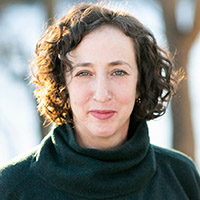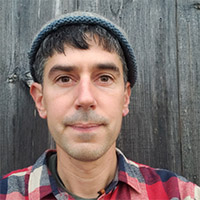This Is Your Farm on Forever Chemicals
In this episode of Unconfined, author Mariah Blake and former organic farmer Adam Nordell tell the dark tale of how the highly toxic, long-lived class of chemicals called PFAS made their way from government labs to corporate factories to a farm near you—and the happier story of how ordinary people are organizing to minimize the harm from this mess.
 |  |

Farms, Forever Chemicals, and Your Food
By Tom Philpott Subscribe to Host Notes
In her superb 2025 book They Poisoned the World: Life and Death in the Age of Forever Chemicals, journalist Mariah Blake teases out the dark saga of PFAS, a class of highly toxic chemicals that have become ubiquitous in our waters, soils, and bodies. Blake shows that there was nothing inevitable about the rise of PFAS, which turn up in everything from non-stick pans to fire-fighting foams to (until recently) fast-food wrappers. They emerged from the Manhattan Project during World War II, and the government scientists who concocted them quickly learned of the severe danger they posed to anyone they touched. But the federal government passed them on to big chemical companies anyway, which kept that dirty knowledge secret while turning them into blockbuster products that delivered billions of dollars in profits over the decades. We are now only beginning to reckon with the public health toll of these compounds that, as Blake reports, could linger in the environment for as long as a million years.
In the latest episode of Unconfined podcast, we try to bring this massive, looming issue down to earth by focusing on one narrow aspect: how PFAS has made its way into farm soils and potentially our food. “Farmers are a thread that runs through this story from beginning to end,” Blake says. In the Manhattan Project days, when government labs first started concocting the compounds, farmers downwind immediately experienced ill effects: “They began complaining that their peach crops were burning up, that their cows were so crippled they couldn't stand ... and in some cases, the farmers themselves were falling ill after eating products they picked.” These days, farms situated far away from the chemicals’ production can feel the effects. The primary pathway is through a cheap fertilizer that the Environmental Protection Agency promoted to farmers for years called biosolids, or more colloquially, sewage sludge. This is the nitrogen- and phosphorus-rich solid bits left over when municipalities process sewage and other wastewater. It might sound like the gross part is the use of human waste to fertilize farms; but the treatment process reliably kills most pathogenic microbes. The trouble comes from the industrial waste that flushes into the system and gets treated along with sewage. We've known for decades that heavy metals and other potentially hazardous compounds can be present in biosolids. But it's recently come to light that they typically contain PFAS, too.
According to the EPA's latest numbers, in 2024, the nation's wastewater treatment churned out a cool 4 million tons of sewage sludge, of which 59.4 percent was applied to land as fertilizer. (The great bulk of the rest was either incinerated or shunted into landfills.)
To get a handle on this vexing problem, I interviewed Blake herself alongside Adam Nordell, a Maine-based former organic farmer who now works as a campaign manager at the environmental NGO Defend Our Health. Blake brings an authoritative big-picture view to the table, while Nordell tells the harrowing story of how PFAS contamination from a previous landowner's application of sewage sludge destroyed his farm and changed the course of his life. Reckoning head on with what is surely one of the most egregious corporate misdeeds and regulatory failures in U.S. history, the two left me with plenty of hope that our nation can manage the crisis wisely and minimize harm to public health. I learned a lot, and I’m sure listeners will, too.
In Host Notes, the voices behind Unconfined podcast deliver additional context to supplement our interviews. Their views do not necessarily reflect those of the Johns Hopkins Center for a Livable Future or the Johns Hopkins University.